Jul
27
2009
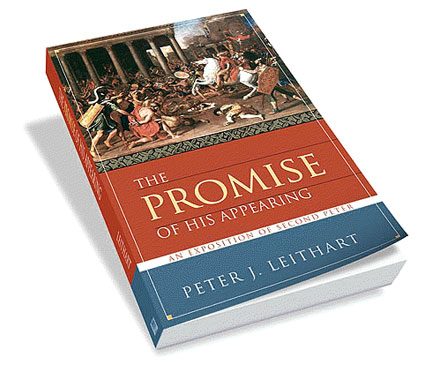
———————————————————————————
“…preterism is not merely a way of interpreting New Testament prophecy but also provides a framework for understanding New Testament theology as a whole.”
———————————————————————————
The Bible was written for us, not to us. This includes the New Testament. We have evangelicals who take both Old and New Testament prophecies concerning Israel and mistakenly apply them to modern Jews (dispensationalism). But then we also have evangelicals who think that the imminent predictions of judgment throughout the New Testament are still somehow “imminent.” This includes most conservative Christian theologians (even smart guys like D. A. Carson), who treat the epistles as though they were written to us. They make the same error as the dispensationalists, albeit on a smaller scale. This misreads the New Testament. It replaces interpretation with application, and unwittingly makes many verses unnecessarily mysterious to modern Christians. Continue reading
2 comments | tags: Dispensationalism, Hermeneutics, Old Testament, Peter Leithart, Revelation | posted in Against Hyperpreterism, Biblical Theology, The Last Days
Jul
17
2009
or Global Warning
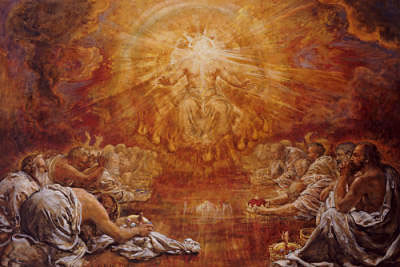
An important tenet of James Jordan’s interpretation of the Revelation is that it shows the Old Covenant angelic government vacating the premises and a human government moving in as a new administration – in AD70. This sounds strange to our ears, but I have found that it does play out in many ways, which it should if it is the correct interpretation.
Now, this handover of heavenly government was a gradual process in the first century, but consummated at the marriage feast of the Lamb. But its outworking in history is gradual. Interesting stuff. Here’s some thoughts.
Continue reading
Comments Off | tags: AD70, Angels, Demons, Nazirite, Peter Leithart, Revelation | posted in Against Hyperpreterism, Biblical Theology, Quotes, The Last Days
Jul
6
2009
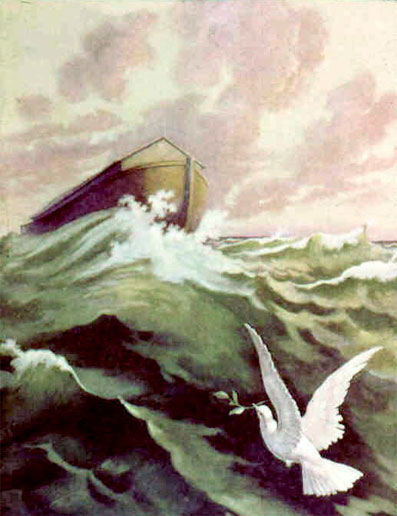
If we don’t get Genesis right, we’ll get much of the Bible wrong. In Through New Eyes (PDF), James Jordan identifies a three-level “cosmos” in the Creation, which is reflected on the earth. There is the Garden Sanctuary, the Land of Eden, and the Outlying Lands, or Garden, Land and World.
This is reflected, not only in the ark of Noah, but also in the Tabernacle. The image is dual, one in heaven and one on earth:
Continue reading
Comments Off | tags: Against Hyperpreterism, Altar, Babel, oikoumene, Paul, Tabernacle | posted in Against Hyperpreterism, Biblical Theology, The Last Days
May
7
2009

The Nazirite Vow
(Article requested by Drew J.)
This vow in Numbers 6 follows the “inspection of jealousy” in Numbers 5. Mark Horne observed that, just as the woman in Numbers 5 was to be inspected for harlotry with her hair untamed, so the Nazirite (whether male or female) was not to cut his or her hair. A Nazirite is a human picture of the church as a warrior bride. Hair is glory. Hair is the cloud of angels (and now, saints) surrounding the throne of God.
“Therefore the woman ought to have a symbol of authority on her head, because of the angels.” (1 Cor. 11:10)
A woman is the glory of her man. A woman’s hair is a symbol of submission, but also a symbol of her own “cloud of angels” – her godly offspring (See Ezekiel 5 for the children of Israel symbolised as the prophet’s hair, Micah 1:16, Matthew 10:30 and also my comments on Nehemiah and his hair-pulling). In battle, a Nazirite was like a blazing torch (the Ark-chariot/Adam) and smoking firepot (the smoke clouds of the incense altar/Eve army), parting his enemies like the pillar of God.
The hair is her “crop”, the twelve stars around her head (Rev. 12), and the question constantly posed to Israel concerns her role as God’s mediatorial Land. Is her crop one of thorns and thistles, or is it godly grain? This is also the question in Numbers 5, and the Lord put Israel to this exact test after the idolatry with the golden calf. The “harlots” were slain with the Levitical sword.
Continue reading
3 comments | tags: Adam, David, James Jordan, John the Baptist, Judges, Nazirite, Numbers 5, Numbers 6, Obed, Paul, Revelation, Samson, Samuel, serpent, Showbread, Tabernacle, Uriah, Wisdom | posted in Against Hyperpreterism, Biblical Theology
Apr
23
2009
“And the God of peace will crush Satan under your feet shortly.” Romans 16:20
James Jordan commented in one of his lectures that some churches had a serpent painted on the floor in the doorway. The saints trod him under foot as they entered God’s house to worship.
Continue reading
Comments Off | tags: Against Hyperpreterism, High Priest, James Jordan, Jericho, Joshua, Satan, Totus Christus | posted in Against Hyperpreterism, Biblical Theology, Totus Christus
Apr
19
2009
or The Feasts are the Key to the Revelation
All Christians recognise Christ’s fulfilment of Passover (crucifixion) and Firstfruits (ascension), followed by Pentecost. Futurists, who major on all things Jewish, recognise that Trumpets and Atonement follow, but they push them into the future.
Continue reading
Comments Off | tags: Acts, AD70, Against Hyperpreterism, Atonement, Dispensationalism, Herod, Holy war, Jezebel, Passover, Totus Christus, Trumpets | posted in Against Hyperpreterism, Biblical Theology, The Last Days
Apr
16
2009
…let us consider one another in order to stir up love and good works, not forsaking the assembling of ourselves together, as is the manner of some, but exhorting one another, and so much the more as you see the Day approaching… you have need of endurance, so that after you have done the will of God, you may receive the promise: “For yet a little while, and He who is coming will come and will not tarry.”
(Hebrews 10:24-25 and 36-37)
The resurrection that the New Testament writers were looking forward to occurred in the first century. They refer to it as being imminent. Jesus said some who heard His words would see His coming before they died. John would remain alive until Jesus came in judgment. It was the saints receiving the kingdom and being resurrected. Now the church governs the world from heaven, and its heavenly ‘Temple’ pattern is being measured out on the earth.
Continue reading
1 comment | tags: AD70, Against Hyperpreterism, Cain, Genesis, Millennium | posted in Against Hyperpreterism, Biblical Theology
Apr
16
2009
This event would explain the massive discontinuity between the apostles and the church fathers. James Jordan writes:
The true Fathers of the Church are Noah, Abraham, Joseph, Moses, Jeremiah, Jesus, Paul, Peter, and John, and the other Fathers in the Bible. These men, under the guidance of the Holy Spirit, created the apostolic deposit from which the Church always grows. The men who came after them, in the first and second and third centuries, are not Church Fathers but Church Babies. We may think that because these men lived right after the apostles, they must have known a lot. Remarkably, this is not the case. Anyone who reads the Bible, climaxing in the New Testament, and then turns to the “apostolic fathers” of the second century, is amazed at how little these men seem to have known…
Continue reading
Comments Off | tags: AD70, Church Fathers, Church History, Firstfruits, James Jordan, Resurrection | posted in Against Hyperpreterism, Biblical Theology, The Last Days
Apr
16
2009
The Mission
or World Without End?
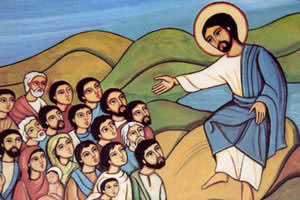
With all the fuss between hyperpreterism and preterism, is it possible both positions are basically right?
Hyperpreterists realise that the apostles were expecting an immiment resurrection, and the partials have to treat verses inconsistently – applying some to AD70 and some to the end of history. But then the hypers have to squish the millennium into AD70 like a fairground mirror. They believe all prophecy has been fulfilled. Not good.
Continue reading
Comments Off | tags: AD70, Against Hyperpreterism, Hermeneutics, Judgment, Moses | posted in Against Hyperpreterism, Biblical Theology, The Last Days
Apr
16
2009
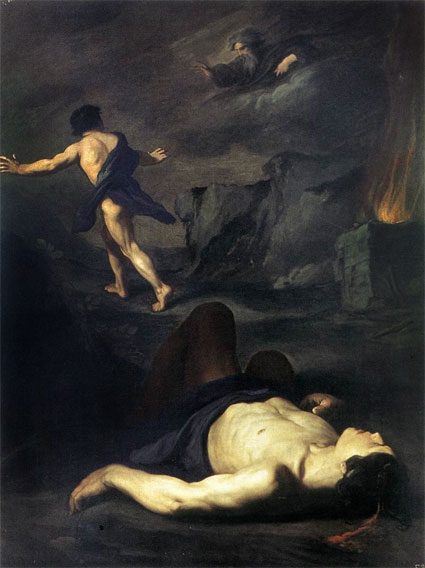
The Rest of the Dead
I saw the souls of those who had been beheaded for their witness to Jesus and for the word of God, who had not worshiped the beast or his image, and had not received [his] mark on their foreheads or on their hands. And they lived and reigned with Christ for a thousand years. But the rest of the dead did not live again until the thousand years were finished. This is the first resurrection. Revelation 20:4-5
James Jordan writes:
Continue reading
Comments Off | tags: Abel, AD70, Cain, James Jordan, Millennium, Resurrection, Revelation, Temple | posted in Against Hyperpreterism, Biblical Theology, The Last Days, Totus Christus































